A Good Time to Be Born: How Science and Public Health Gave Children a Future
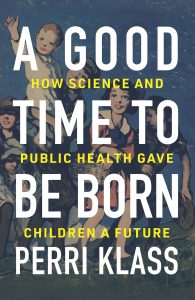 The fight against child mortality that transformed parenting, doctoring, and the way we live.
The fight against child mortality that transformed parenting, doctoring, and the way we live.
Only one hundred years ago, in even the world’s wealthiest nations, children died in great numbers—of diarrhea, diphtheria, and measles, of scarlet fever and tuberculosis. Throughout history, culture has been shaped by these deaths; diaries and letters recorded them, and writers such as Louisa May Alcott, W. E. B. Du Bois, and Eugene O’Neill wrote about and mourned them. Not even the powerful and the wealthy could escape: of Abraham and Mary Lincoln’s four children, only one survived to adulthood, and the first billionaire in history, John D. Rockefeller, lost his beloved grandson to scarlet fever. For children of the poor, immigrants, enslaved people and their descendants, the chances of dying were far worse.
The steady beating back of infant and child mortality is one of our greatest human achievements. Interweaving her own experiences as a medical student and doctor, Perri Klass pays tribute to groundbreaking women doctors like Rebecca Lee Crumpler, Mary Putnam Jacobi, and Josephine Baker, and to the nurses, public health advocates, and scientists who brought new approaches and scientific ideas about sanitation and vaccination to families. These scientists, healers, reformers, and parents rewrote the human experience so that—for the first time in human memory—early death is now the exception rather than the rule, bringing about a fundamental transformation in society, culture, and family life.
–
 From the advent of the Pill to in vitro fertilization, from Roe v. Wade to the Freedom of Choice movement, the reproductive rights of women have always been a highly volatile, hotly debated subject. Reproductive Rights and Technology addresses this important and emotionally charged issue. As with the other titles in the Library in a Book series, it provides a historical overview, reference resource, and research guide that can be useful not only to students, teachers, and librarians but also to journalists, media people, and members of the public interested in the impact that this issue has on our society. This volume examines reproductive issues from a wide variety of perspectives and disciplines – including science, technology, history, economics, politics, social attitudes, religion, and philosophy. Readers will also discover the range of reproductive technologies currently available, how their development has been affected by people’s beliefs and values, and the circumstances under which these techniques are made available. This addition to the critically acclaimed Library in a Book series will be of great use to everyone concerned with the issues of reproduction, childbearing, and women’s rights.
From the advent of the Pill to in vitro fertilization, from Roe v. Wade to the Freedom of Choice movement, the reproductive rights of women have always been a highly volatile, hotly debated subject. Reproductive Rights and Technology addresses this important and emotionally charged issue. As with the other titles in the Library in a Book series, it provides a historical overview, reference resource, and research guide that can be useful not only to students, teachers, and librarians but also to journalists, media people, and members of the public interested in the impact that this issue has on our society. This volume examines reproductive issues from a wide variety of perspectives and disciplines – including science, technology, history, economics, politics, social attitudes, religion, and philosophy. Readers will also discover the range of reproductive technologies currently available, how their development has been affected by people’s beliefs and values, and the circumstances under which these techniques are made available. This addition to the critically acclaimed Library in a Book series will be of great use to everyone concerned with the issues of reproduction, childbearing, and women’s rights.
–

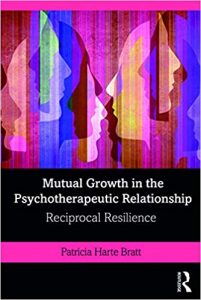 Mutual Growth in the Psychotherapeutic Relationship: Reciprocal Resilience is an essential, innovative guide for mental health professionals who listen repeatedly to stories of devastation and trauma.
Mutual Growth in the Psychotherapeutic Relationship: Reciprocal Resilience is an essential, innovative guide for mental health professionals who listen repeatedly to stories of devastation and trauma.
Moving beyond traditions that consider the clinician as existing only for the patient and not as an individual, this breakthrough model explores the possibility of mutual resilience-building and personal benefit developing between therapists and their patients. The first section of the book situates Reciprocal Resilience in the context of evolving resilience studies. The second section provides lively, demonstrative clinical anecdotes from therapists themselves, organized into chapters focused on enhancing their positive strategies for coping and growth while functioning under duress.
This book presents a framework for teaching and supervising psychotherapists that can enrich clinician well-being, while recognizing the therapeutic relationship as the key for enabling patients’ emotional growth. It challenges mental health practitioners to share their own experiences, presenting a research model syntonic with how clinicians think and work daily in their professional practice. It offers a pioneering approach, finding inspiration in even the darkest moments for therapists and patients alike.
–
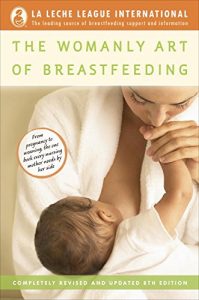 It’s no secret that breastfeeding is the normal, healthy way to nourish and nurture your baby. Dedicated to supporting nursing and expectant mothers, the internationally respected La Leche League has set the standard for educating and empowering mothers in this natural art for generations.
It’s no secret that breastfeeding is the normal, healthy way to nourish and nurture your baby. Dedicated to supporting nursing and expectant mothers, the internationally respected La Leche League has set the standard for educating and empowering mothers in this natural art for generations.
Now their classic bestselling guide has been retooled, refocused, and updated for today’s mothers and lifestyles. Working mothers, stay-at-home moms, single moms, and mothers of multiples will all benefit from the book’s range of nursing advice, stories, and information—from preparing for breastfeeding during pregnancy to feeding cues, from nursing positions to expressing and storing breast milk. With all-new photos and illustrations, this ultimate support bible offers
• real-mom wisdom on breastfeeding comfortably—from avoiding sore nipples to simply enjoying the amazing bonding experience
• new insights into old approaches toward latching and attaching, ages and stages, and answers to the most-asked questions
• strategies for moms who choose to breastfeed for a short time or who plan to nurse for a year or more
• reassuring information on nursing after a C-section or delivery complications
• recent scientific data that highlight the many lifelong health benefits of breastfeeding
• helpful tips for building your support network—at home or when back at work
• nursing special-needs infants, premies, multiples, and how to thrive no matter what curveball life throws
• guidance on breast health issues, weight gain, day care, colic, postpartum depression, food allergies, and medications
Plus—Internet references for further information, including La Leche League support sites and groups.
Mothers bringing babies into a new world want sustainable, healthy, positive ways to help their children blossom and thrive. There is no better beginning for your baby than the womanly art of breastfeeding.
–
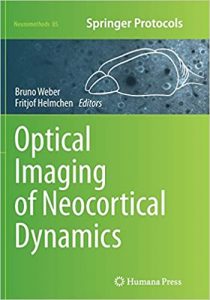 The application of optical methods for investigating neocortical circuit dynamics has greatly expanded in recent years, providing novel insights into the fascinating world of brain function. Optical Imaging of Neocortical Dynamics presents a guide to these indispensible tools, which cover a broad range of spatiotemporal scales and a large variety of signaling aspects, ranging from voltage changes to metabolic states. This detailed volume specifically explores methods that are applied in experiments on living brains (in vivo) and that relate to functional properties on the spatial scale of cortical circuits. Beginning with an introductory section that focuses on physical fundamentals of optical imaging as well as molecular tools used for in vivo optical imaging and optogenetic control, the book continues with the most relevant methods and their applications to investigate changes in neuronal and glial activity states as well as optical imaging methods probing metabolic states. Written for the Neuromethods series, this volume contains the kind of detail and key implementation advice that ensures successful results in the lab.
The application of optical methods for investigating neocortical circuit dynamics has greatly expanded in recent years, providing novel insights into the fascinating world of brain function. Optical Imaging of Neocortical Dynamics presents a guide to these indispensible tools, which cover a broad range of spatiotemporal scales and a large variety of signaling aspects, ranging from voltage changes to metabolic states. This detailed volume specifically explores methods that are applied in experiments on living brains (in vivo) and that relate to functional properties on the spatial scale of cortical circuits. Beginning with an introductory section that focuses on physical fundamentals of optical imaging as well as molecular tools used for in vivo optical imaging and optogenetic control, the book continues with the most relevant methods and their applications to investigate changes in neuronal and glial activity states as well as optical imaging methods probing metabolic states. Written for the Neuromethods series, this volume contains the kind of detail and key implementation advice that ensures successful results in the lab.
Practical and easy to use, Optical Imaging of Neocortical Dynamics serves as an ideal guide for researchers who aim to apply these highly valuable tools to their own neuroscientific studies.
–
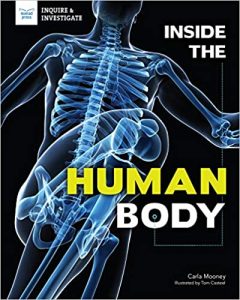 A fun and informative introduction to the bodily systems that keep us alive! Hands-on science experiments and STEM research projects help readers ages 12 to 15 discover an amazing world―their own bodies!
A fun and informative introduction to the bodily systems that keep us alive! Hands-on science experiments and STEM research projects help readers ages 12 to 15 discover an amazing world―their own bodies!
What is the most complex machine on earth? The human body!
In Inside the Human Body, readers ages 12 to 15 peel back the layers to take a look inside this amazing machine and learn the basic anatomy of the human body and its bones, muscles, blood vessels, nerves, and organs. We’ll also explore the body’s physiology and how its organs work together to allow us to function and survive.
Take a ride through the different organ systems, including the musculoskeletal system, cardiovascular system, respiratory system, nervous system, endocrine system, digestive system, immune system, and urinary system, and investigate each system’s role in operating our human body machine. In addition, we’ll explore some of the diseases that can affect the human body and what we can do to keep our bodies healthy and fit. Text-to-self and text-to-world connections make learning applicable and fundamental.
• Combining hands-on STEM activities in anatomy, physiology, biology, chemistry, physics, and nutrition, Inside the Human Body offers entertaining illustrations and fascinating sidebars to illuminate the topic and engage readers further. This book integrates a digital learning component by including links to primary sources, videos, and other relevant websites.
• Projects include building a model of the lungs to demonstrate how they function, creating a working model of the cardiovascular system, investigating how the immune system protects the body from common illnesses, using vinegar to demonstrate how the stomach breaks down food, and creating a multimedia presentation about a disorder of the endocrine system.
• Additional materials include a glossary and a list of current reference works, websites, and internet resources.
–
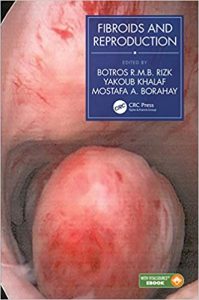 The most common abnormal growth of the female reproductive system, fibroids, are thought to affect the majority of women at some point during their reproductive years. This text from leading fibroid experts looks at the latest evidence on how the problem impinges on reproduction and the most up-to-date management and treatment options available to help patients with fibroids hoping to conceive.
The most common abnormal growth of the female reproductive system, fibroids, are thought to affect the majority of women at some point during their reproductive years. This text from leading fibroid experts looks at the latest evidence on how the problem impinges on reproduction and the most up-to-date management and treatment options available to help patients with fibroids hoping to conceive.
–
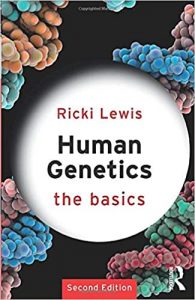 Human genetics has blossomed from an obscure biological science and explanation for rare disorders to a field that is profoundly altering health care for everyone. This thoroughly updated new edition of Human Genetics: The Basics provides a concise background of gene structure and function through the lens of real examples, from families living with inherited diseases to population-wide efforts in which millions of average people are learning about their genetic selves. The book raises compelling issues concerning:
Human genetics has blossomed from an obscure biological science and explanation for rare disorders to a field that is profoundly altering health care for everyone. This thoroughly updated new edition of Human Genetics: The Basics provides a concise background of gene structure and function through the lens of real examples, from families living with inherited diseases to population-wide efforts in which millions of average people are learning about their genetic selves. The book raises compelling issues concerning:
• The role of genes in maintaining health and explaining sickness
• Genetic testing, gene therapy, and genome editing
• The common ancestry of all humanity and how we are affecting our future.
Written in an engaging, narrative manner, this concise introduction is an ideal starting point for anyone who wants to know more about genes, DNA, genomes, and the genetic ties that bind us all.
–
 Spoiler: The Ethics of Killing does find some abortion to be acceptable. This is probably the basis of most mainstream(i.e. simple) criticism of this work. However, even for someone that disagrees with some of Jeff McMahan’s positions, the Ethics of Killing is well written, and helps the reader, both professionals as well as students, gain a deeper, physical and metaphysical conception of what is wrong with killing. The writing style uses many examples that appeal to intuition, both positively and negatively, and appeals to which are used by McMahan to make sensible arguments. This work, intended as the first part of a two part series on Killing, attempts to find exactly what is morally wrong with killing. One answer that is dealt with is what exactly is morally wrong with ending a life. McMahan attempts to resolve such fundamental questions by starting with a notable focus on identity. In identifying what is essentially ‘us’ as embodied minds, and not something simply biological, McMahan opens new considerations by which to explore the ethical issues in killing. Ultimately, McMahan succeeds in providing a well written examination, that, while can be questioned, must be taken seriously.
Spoiler: The Ethics of Killing does find some abortion to be acceptable. This is probably the basis of most mainstream(i.e. simple) criticism of this work. However, even for someone that disagrees with some of Jeff McMahan’s positions, the Ethics of Killing is well written, and helps the reader, both professionals as well as students, gain a deeper, physical and metaphysical conception of what is wrong with killing. The writing style uses many examples that appeal to intuition, both positively and negatively, and appeals to which are used by McMahan to make sensible arguments. This work, intended as the first part of a two part series on Killing, attempts to find exactly what is morally wrong with killing. One answer that is dealt with is what exactly is morally wrong with ending a life. McMahan attempts to resolve such fundamental questions by starting with a notable focus on identity. In identifying what is essentially ‘us’ as embodied minds, and not something simply biological, McMahan opens new considerations by which to explore the ethical issues in killing. Ultimately, McMahan succeeds in providing a well written examination, that, while can be questioned, must be taken seriously.
–